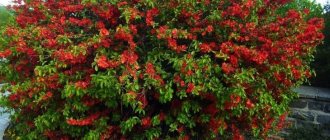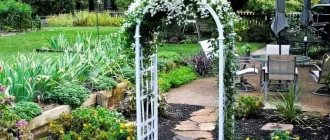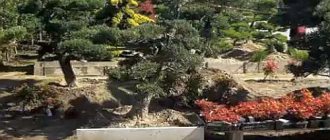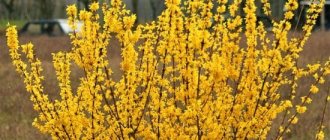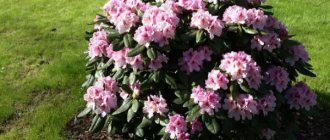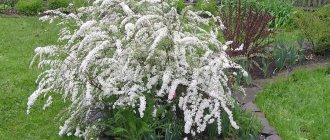How to give a bush a spherical shape?
What tools are needed, what template to prepare for cutting? The ball is a fairly simple, laconic, familiar shape. But she is always spectacular. Bushes trimmed in the shape of a ball stand out in any landscape composition. Such plants look impressive against the background of tall grasses, trees, gazebos, and the stone wall of a building. Balloons in the design sense are universal. They go well with most complex shapes.
Primary requirements
Looking at photos of bushes being trimmed and marveling at the skill of the gardener, not everyone knows that they can create such a masterpiece themselves. You just need to study the issue, be patient and have the appropriate tools.
This process may take a long period of time. It all depends on the time of year and the age of the plant. Perhaps it will begin with planting seedlings or seeds, which will stretch over an even longer period of time.
Everything needs to be done slowly, following the sequence, taking the necessary pauses so as not to harm the plants.
Barberry
Some of its representatives, for example, Barberry Thunberg, as they grow, form a fairly tall and spreading bush with beautiful leaves. In summer they are bright green in color, and in autumn they change to a rich red hue.
For pruning, choose the largest plants that will fit perfectly into the overall interior of the garden plot, delighting with their bright colors.
Plant selection
Before the pruning shears get to work, you need to decide which plant to choose. It must be suitable for the climatic zone of the site in order to successfully take root and grow unhindered.
Both existing plants and young seedlings can be used for compositions. If this is a young plant, it is worth making sure that the root system is mature and has reliable adhesion to the ground. Mature plantings require pruning before decorative pruning to rejuvenate the shoots.
If you don’t have any experience in cutting hair yet, it’s better to start with deciduous trees. They tolerate this procedure more easily. Foliage grows quickly, which will help quickly hide mistakes and correct them. You can get the desired result faster than with coniferous species.
Why does spirea need pruning at all?
Pruning spirea for beginning gardeners is an adventure. What if this event harms the shrub, and it reacts painfully to pruning - it begins to dry out? What if his appearance is irreparably damaged? Don't worry, nothing like that will happen. The bride will with renewed vigor delight everyone who sees her with her extraordinary beauty.
Pruning spirea is necessary and useful for the following reasons:
- Air circulation inside the bush improves. The bush is less exposed to invasions of various insects, and the risk of fungal diseases is significantly reduced.
- The decorative qualities of the plant increase, since the gardener removes dry and crooked shoots, cuts off everything that gets in the way, sticks out and destroys the created image.
- After pruning, the plant receives an additional incentive to form new shoots.
- Spiraea develops, its flowering becomes more abundant and luxuriant.
It turns out that pruning is a mandatory procedure that accompanies the normal development of decorative crops. Spiraea recovers quickly, so all mistakes made by novice gardeners can be easily compensated for.
Best place to land
It is worth thinking in advance and choosing the optimal place for planting. The plant should receive the maximum amount of sunlight per day.
This is important if you plan to shape the crown. This will prevent the branches from falling apart inside the figure. In the shade, the leaves will become small over time and the crown less lush.
If this condition is met, the plant after pruning will become thick and voluminous.
We recommend reading:
- Effective Weed Killer - Review of the Best Weed Removal Products and Methods. Geotextiles and rules for their installation (145 photos and videos)
Flowers for a flower bed that bloom all summer - a review of unpretentious types of flowers for the whole summer (85 photos)
- Do-it-yourself trellis - 110 photos on how to make it yourself and video tips for use in landscape design
Where to start designing a garden
Creating beautiful forms from the crown of plants is an art and a very exciting activity. I waved the scissors a couple of times and an ordinary bush takes on an intricate, fairy-tale shape.
However, it is still necessary to have some skills and follow important guidelines when performing this work.
The right tool
Since decorative pruning requires periodic adjustments to give the plant its shape, it is recommended not to skimp on tools and purchase a professional version.
It is easier to work with and will allow you to fully enjoy the process. The service life is long, which will pay off all costs over time.
Finding the right tool won't be difficult. Garden scissors for trimming bushes, secateurs, brush cutters, saws are always available in any department for summer residents.
For even and quick cutting of the crown and shaping it into shapes, choosing cordless scissors would be an excellent solution. These scissors are suitable for cutting bushes and the grass around them.
Petrol shears will allow you to work in the rain. But their heavy weight is not for everyone. An easier analogue is electric scissors. But the work will have to be carried out only in dry weather.
If you have to deal with branches no more than 30 mm thick, a pruner will do. A lopper can handle thicker branches. It is convenient to use when cutting off the top branches.
A garden knife, which has a curved blade for ease of use, is also useful for working with shrubs. They can be used to adjust the shape and trim branches.
We recommend reading:
Laying artificial turf with your own hands: how to choose and step-by-step description of how to lay a lawn (100 photos)How to lay rolled lawn - step-by-step master class and tips on how to lay rolled lawn correctly (120 photos + video)
The best flower clock - a step-by-step description of how to make a beautiful element of landscape design correctly
What time of year is best to do the work?
Crown formation is mainly carried out in early spring. Deciduous shrubs are trimmed in March - April, before starting work in the garden. The next procedure is carried out in the fall. Depending on the biological characteristics, a third haircut is also carried out.
The crown of conifers is formed in early spring or after the growth of young shoots stops - at the end of June.
Haircut shapes
When the issue of choosing the type of plant, planting location has been decided and all the necessary equipment has been purchased, it’s time to decide on the desired shape.
Curly trimming of bushes can be of varying complexity. From simple geometric shapes to sculptures of animals and people. Entire compositions can be created. A hedge that is neatly trimmed to fit looks original.
Cypress tree
For a decorative haircut, the ideal option is rich colors (from yellow to bright blue), wide bushes, and delicate scaly leaves.
The plant is easy to trim and takes on the desired shape. Resistant to frost, drought and wind. However, too frequent haircuts are undesirable - the best frequency is once a year.Hedge
Such work will decorate any suburban area, decorate it and protect it from dust and wind. It is not difficult to form a hedge.
Seedlings or seeds are used for planting. A distance of about 80 cm is maintained between them. When their length reaches half a meter, the first haircut is carried out. This will allow the future hedge to grow in width and become dense.
When the sprouts stretch out a little more, you can begin to form along the lines. They can be both straight and smooth.
How to trim bushes correctly
Initially, it is clear that the formation of a decorative crown is not carried out in one year.
To achieve the desired result, one or two preparatory haircuts are carried out. One third of the stem growth is removed. This is done to increase the growth of shoots, which makes the crown thick and dense foliage.
Evergreens - a complete list with descriptions and recommendations from a gardenerVertical gardening - from idea to implementation, choosing options according to budget and attractiveness (photo + video)
- Vertical flower beds - basic principles and rules for choosing plants and arranging a suburban area with your own hands
When the bush reaches the desired size, the desired planting configurations begin to form.
Important! Cuts on branches should be made each time a little higher than the previous one. If you do it at the same level, one day your bush will be left without branches.
cubic bush
For this form, seedlings are placed in a certain order. Four are planted in the corners, and the fifth is in the middle. A template is being made.
The rods are installed at the four corners, then connected by crossbars at the desired height. You should move from top to bottom, leaving a gap of 2 cm.
Original pyramid
Most often, thuja or yew bushes are given a similar shape, since their natural growth coincides with the given figure. The wire frame is presented in the form of a tripod with several transverse crossbars.
Of course, the art of decorative haircuts is not limited to just the simplest figures. Today, in landscape design magazines you can find a wide variety of shapes and figures: from single fairy-tale characters to real compositions of several objects.
Photos of beautiful design and combination can be viewed on the Lyubimaya Dacha portal.
Ball shape
The easiest way to achieve this shape is to use a rotating template. It consists of a pin and a semicircular wire attached to it.
The pin is installed near the stem itself, and the wire is turned in a circle. In this way, all protruding foliage is gradually cut off.
You can use a cube template. Initially give the bush this shape, and then cut off the corners. The result will be a ball.
Where to start
If you are just starting to practice topiary - bush cuttings, it is advisable to start with simple shapes:
Balls - many plants initially have a round shape, it is enough to slightly correct them, for example, thuja occidentalis. However, other shrubs still require effort and a little patience.
To give the correct shape, you can purchase a ready-made structure - a rod with a wire circle equal to the future diameter of the bush, or watch master classes on making such improvised means.
Cube - to create this shape, several bushes are used, and they must be planted correctly. For example, a composition of five plants: four bushes in the corners, one in the center, keep in mind that the bushes will grow. Common privet and cotoneaster are suitable for these forms.
Advice! To make your cube dense and lush, always cut the shoots only above the bud located inward, then the crown will be thick without loose gaps.
Pyramid - plants with dense and small foliage are selected. An important point in the formation is to clearly highlight the edges of the pyramid. Cotoneaster, privet, and western thuja are suitable.
The shape is formed very simply, determine how many sides your pyramid will have, draw the desired shape on the ground around the bush. Insert slats along the tops of the figure, tie the top, and form your pyramid along these edges.
Advice! All edges are formed at the same time, in order to avoid deformation of the figure; an error may lead to repeated cutting.
Cylindrical shape
The basis for the shape of the green columns is a circle. For the frame, guides located in parallel are used. The wire forms two circles, bottom and top. It's worth moving from top to bottom. Don’t forget to constantly monitor the results and make timely adjustments.
Having mastered simpler figures, you can move on to creating complex ones. So, a column or cone is taken as the basis for forming a spiral. After improving your skills, you may want to try your hand at creating original animal figures.
Many people have a desire to give their site individuality. Beautifully designed green spaces will emphasize neatness and taste. The process itself, if you approach it seriously, will not cause difficulties. Patience, desire and a minimum of knowledge are the basis for starting action.
Something for your scissors.
There are dozens of trees and shrubs that tolerate pruning well, even in central Russia. And there are hundreds of them with varieties. If varietal plants are not available to you, you can easily find objects for trimming in the forest. Our common species such as linden, willow, spruce, juniper, elm, and alder are well sheared.
Common privet has all the qualities necessary for a border shrub. It has medium-sized foliage, grows well after being cut, and holds the shape given by the cut for a long time. Its disadvantage is its relatively low winter hardiness. But if you use its decorative form “Atrovirens”, which, by the way, is the most common, and limit the cut “products” to a height of 60-70 cm, then frost damage is practically eliminated.
Privet has a variety called "Aurea" with golden foliage. It is three times lower than the main form, and less durable. But if you use it for squat curbs 15-25 cm high, practically no freezing is observed.
Brittle willow is best known for its popular decorative form “Bullata”, which is also called “self-stringing” due to the density of its contours. It should be said that the wild varieties of this willow are not inferior in attractiveness to the cultivated form, and are also well trimmed. In nature, it is usually a medium-sized tree, 7-8 (up to 15) meters high, with a dense tent-shaped crown, leafy only at the top.
Cotoneaster brilliantis - in terms of its representation in landscaping and park construction, it is the main border shrub for central Russia and the North-West. But in urban plantings it is often unimpressive with its appearance, which discourages gardeners from using this shrub in the garden. It must be said that this is not the fault of the cotoneaster itself.
Usually low borders 60-70 cm high are made from cotoneaster, which can be very decorative if done correctly. Look at what cotoneaster is capable of, from which wide shaped hedges are created through dense multi-row planting. Such hedges are trimmed up to 5-6 times per season. But if impeccability is not your first priority, then three times is enough.
Viburnum foliage - thanks to its pliability in pruning, and especially its two “colored varieties”, this shrub is one of the most useful ornamental deciduous shrubs for yard landscaping and small amateur gardens. It allows for an incredibly diverse range of uses in the garden. Both varieties (purple “Diabolo” and yellow “Aurea”) can be used for trimmed trapezoidal hedges 120-170 cm high.
We invite you to familiarize yourself with: Small-leaved linden planting and care
A hedge, if cut only from the sides, can be semi-free. In both cases, hedges not only do a good job of fencing, but are excellent screens from prying eyes and serve as an excellent background, against which the most ordinary flower arrangements become unusually attractive.
Individual bushes can be formed in the shape of an “inverted drop”. In this way, by the way, you can refine a completely mature bush. Other haircut shapes can be a variety of geometric shapes: balls and hemispheres, cubes, pyramids. Asymmetrical forms of cutting look no less impressive - various pillows, mops, which can be created by cutting a single plant or several densely planted bushes, united by cutting into one whole.
Rhododendron Katevbinsky - colorful flowering is expected from rhododendron, and few people notice how beautiful its shiny leathery leaves are, similar to lingonberry leaves, but 10-15 times larger. This species itself is winter-hardy, but does not bloom every year. The bush is initially quite dense, but with age it can stretch out and thin out.
Japanese spirea “Golden Princess” - Japanese spirea has a lot of varieties that initially have thick and dense crowns. It is not difficult to refine their appearance by transforming them into pillows, balls and hemispheres. This, by the way, does not have any negative consequences for their flowering. As for the Golden Princess variety, it is remarkable for its small leaves, the golden color of which is practically unchanged from spring to autumn.
The varieties “Little Princess”, “Shirobana”, “Gold Mound”, “Gold Flame”, etc. are also suitable for cutting.
Thuja occidentalis - almost all varietal thujas are well trimmed. But when cutting them, it is advisable to adhere to the rule: the silhouette of the haircut should be similar to the natural growth form of the variety. Balls, hemispheres and pillows are formed from spherical varieties; from pyramidal ones - columns, pyramids, cones, etc. Number of haircuts from 3 to 6 per season.
The varieties “Rhine Gold”, “Aurea”, “Smaragd”, “Globoza”, “Golden Tip”, “Kristata”, etc. are good for cutting.
Kuril tea - most varieties of Kuril tea have loose and loose crowns. Giving density and smooth contours unrecognizably changes the appearance of the shrub for the better. Even a non-flowering bush becomes unusually attractive. In addition, cutting does not hinder, but on the contrary, stimulates flowering.
To ensure proper care for shrubs and trees, it is recommended to regularly prune them to form a crown.
Or you can do not the usual pruning of branches and twigs, but arrange a cluster of green figures, shapes and reliefs in the garden. Neatly formed shrubs have a well-groomed, noble appearance.
Using the curly haircut method, you can set a certain style for an area or dilute the existing one.


